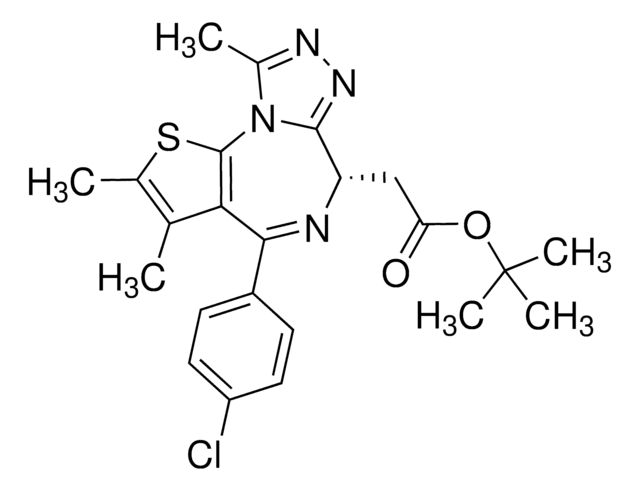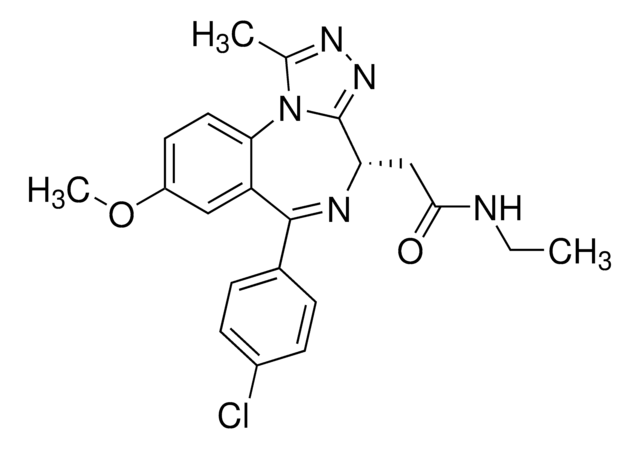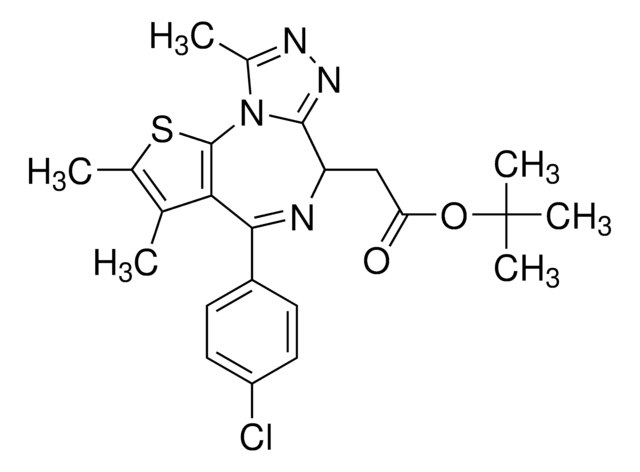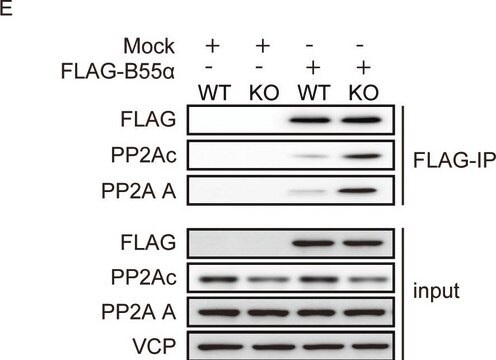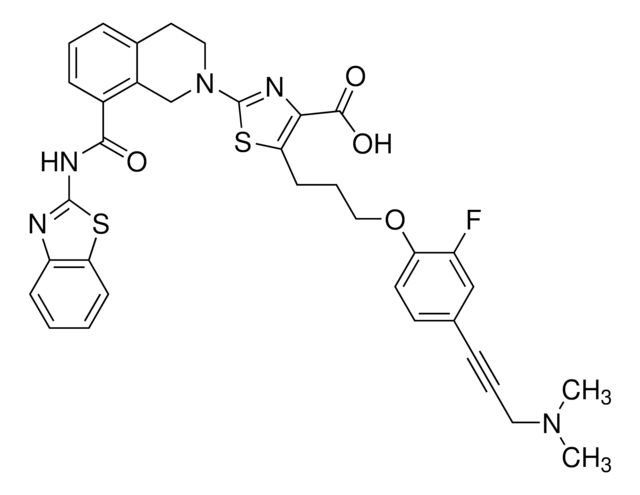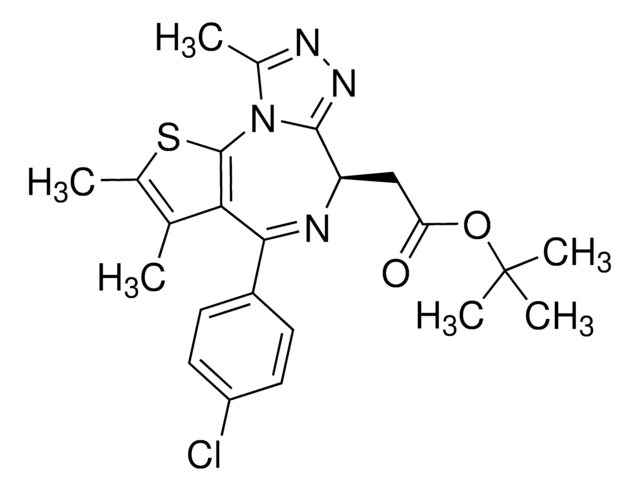401010
I-BET
A cell-permeable benzodiazepine compound that binds the tandem bromodomains of BET (bromodomain and extra terminal domain) family members BRD2 (1-473), BRD3 (1-434), and BRD4 (1-477) with high affinity.
Synonim(y):
(2-[(4chlorophenyl)-1-methyl-8-(methyloxy)-4H-[1,2,4]triazolo[4,3-a][1,4]benzodiazepin-4-yl]-N-ethylacetamide, GSK525762A,(S)-2-(6-(4-Chlorophenyl)-8-methoxy-1-methyl-4H-benzo[f][1,2,4]triazolo[4,3-a][1,4]diazepin-4-yl)-N-ethylacetamide, BRD2 Inhi, GSK525762A,(S)-2-(6-(4-Chlorophenyl)-8-methoxy-1-methyl-4H-benzo[f][1,2,4]triazolo[4,3-a][1,4]diazepin-4-yl)-N-ethylacetamide, (2-[(4chlorofenylo)-1-metylo-8-(metyloksy)-4H-[1,2,4]triazolo[4,3-a][1,4]benzodiazepin-4-ylo]-N-etyloacetamid, BRD2 Inhibitor I, BRD3 Inhibitor I, BRD4 Inhibitor I
About This Item
Polecane produkty
Poziom jakości
Próba
≥98% (HPLC)
Formularz
solid
producent / nazwa handlowa
Calbiochem®
warunki przechowywania
OK to freeze
protect from light
kolor
yellow-white
rozpuszczalność
DMSO: 50 mg/mL
Warunki transportu
ambient
temp. przechowywania
−20°C
ciąg SMILES
Clc1ccc(cc1)C2=N[C@H](c3[n](c(nn3)C)c4c2cc(cc4)OC)CC(=O)NCC
InChI
1S/C22H22ClN5O2/c1-4-24-20(29)12-18-22-27-26-13(2)28(22)19-10-9-16(30-3)11-17(19)21(25-18)14-5-7-15(23)8-6-14/h5-11,18H,4,12H2,1-3H3,(H,24,29)/t18-/m0/s1
Klucz InChI
AAAQFGUYHFJNHI-SFHVURJKSA-N
Opis ogólny
Opakowanie
Ostrzeżenie
Rekonstytucja
Inne uwagi
Informacje prawne
Kod klasy składowania
11 - Combustible Solids
Klasa zagrożenia wodnego (WGK)
WGK 3
Temperatura zapłonu (°F)
Not applicable
Temperatura zapłonu (°C)
Not applicable
Certyfikaty analizy (CoA)
Poszukaj Certyfikaty analizy (CoA), wpisując numer partii/serii produktów. Numery serii i partii można znaleźć na etykiecie produktu po słowach „seria” lub „partia”.
Masz już ten produkt?
Dokumenty związane z niedawno zakupionymi produktami zostały zamieszczone w Bibliotece dokumentów.
Nasz zespół naukowców ma doświadczenie we wszystkich obszarach badań, w tym w naukach przyrodniczych, materiałoznawstwie, syntezie chemicznej, chromatografii, analityce i wielu innych dziedzinach.
Skontaktuj się z zespołem ds. pomocy technicznej